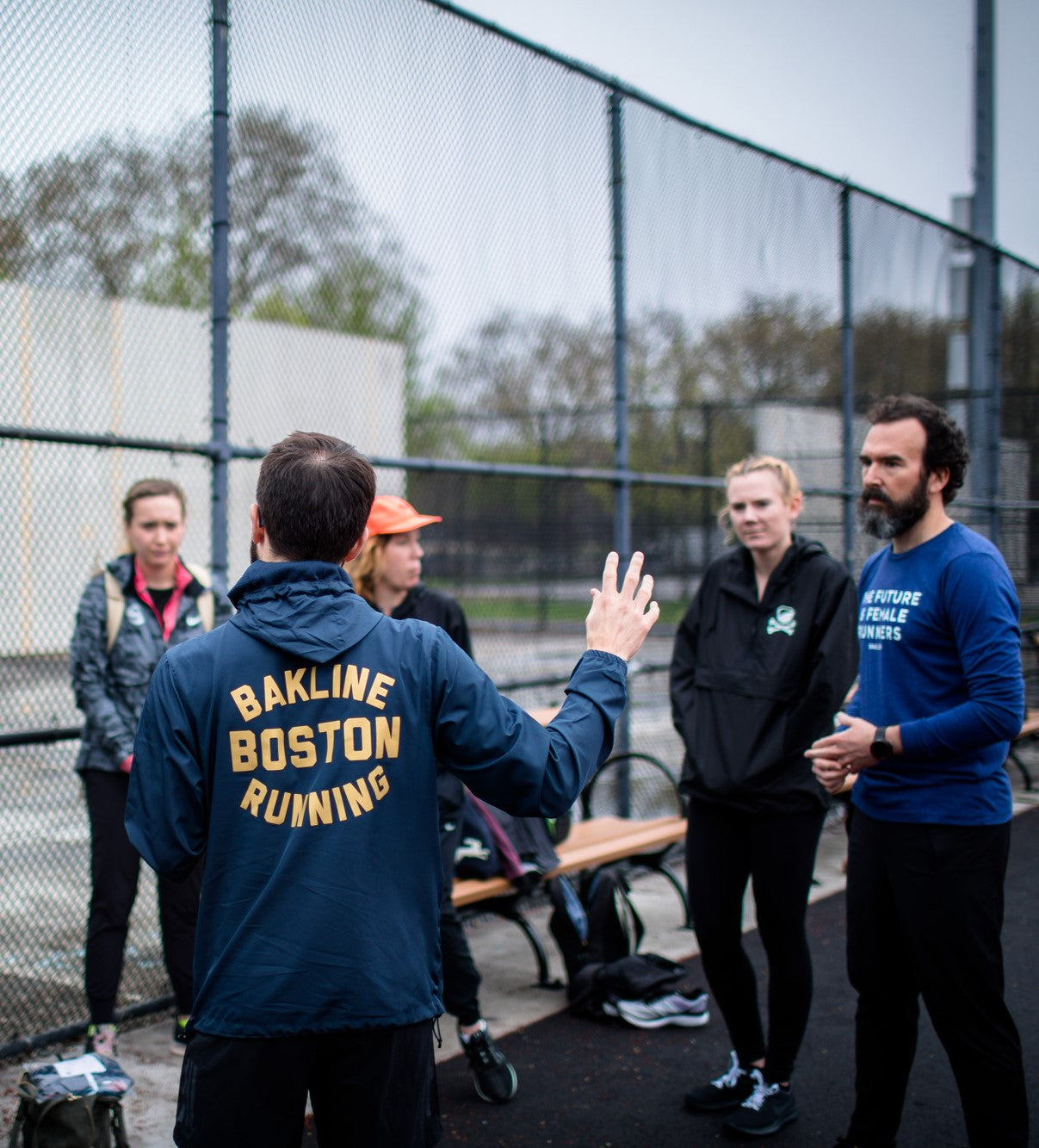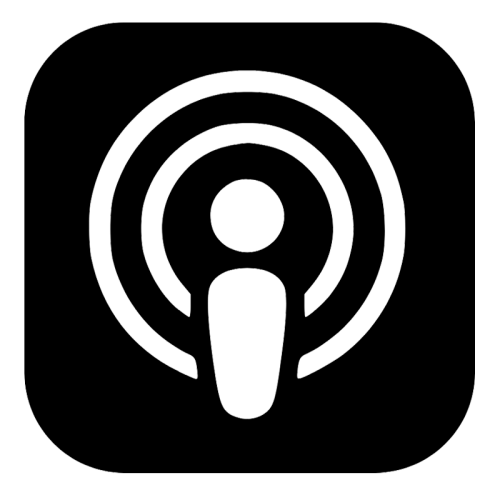A practical guide to hiring a running coach — when to seek one, how to choose and work with one confidently, and why they can make all the difference.
Most runners think about hiring a coach only when they’re chasing a big PR or a major race. But the reality is that coaching isn’t just for elites, and it isn’t just about getting faster. The right coach at the right time can help you break through plateaus, return from setbacks with confidence, or simply take the decision fatigue out of training. And while coaching can be transformative, not every coach–athlete match works—knowing what to look for (and what to avoid) can make all the difference.
Episode Description
In this episode of Legwork, Matt and Molly take a practical look at the when, how, and why of hiring a running coach. Drawing on their own experiences as athletes and coaches, they explore what makes the coaching relationship truly valuable beyond the plan itself—and how runners can get the most out of it.
They walk through the key parts of the process:
-
Why runners hire coaches — from chasing performance goals to wanting structure, support, or accountability
-
Common barriers to hiring — cost, feeling like you're not worthy of coaching or that you need to be faster, or the social elements of running with a club or with your friends (all of which a good coach can help you manage and feel confident)
-
What coaches can (and can’t) do — from individualized plans and race strategy to dispelling myths about gait analysis (which really can't be done visually) or “magic workouts”
-
How to evaluate a coach — key questions to ask, understanding certifications, and exploring what experience they have with people like you
-
How to be coachable — building trust, communicating openly, and knowing when it might be time to move on
-
Red flags to watch for — warning signs that a coaching relationship may not be the right fit
Whether you’re considering coaching for the first time, thinking about switching coaches, or simply looking to get more from the relationship you already have, this episode gives you the tools to approach coaching with clarity and confidence.
Full Show Notes
00:00 – Our First Interaction With A Coach in High School
Matt and Molly begin with stories of their earliest coaches to illustrate how formative coaching relationships can be.
- Molly remembers her junior high track coach, who introduced structure at a vulnerable age when athletes are learning their bodies.
- Matt recalls Mr. Roper, his high school distance coach, known for high-volume training, and another coach who called him a “jack of all trades, master of none.” That comment stung but later became a source of pride in his versatility.
- Both reflect on how a coach’s words can linger for years—encouraging or discouraging—and how the role parallels teachers or managers who shape growth beyond the immediate task.
Takeaways:
-
Coaches wear multiple hats (often also teachers).
-
Language matters: what coaches say can leave lasting marks.
-
Early experiences show how vital it is to match philosophy and personality.
06:18 – The Why, When, and How of Finding A Coach – Our Agenda
They set out the agenda for the episode: a guide to navigating the coaching relationship.
-
The episode will cover why runners hire coaches, what keeps them from doing so, what coaches can realistically provide, and what they can’t.
-
They’ll discuss how to evaluate a coach, red flags to watch for, and how athletes themselves can be more coachable.
-
The aim is to give listeners a practical toolkit to think critically about coaching rather than treating it as a default or status symbol.
Takeaways:
-
Not every coach is right for every athlete.
-
Coaching should be seen as a partnership, not just a transaction.
-
The episode will blend personal anecdotes with guidance for making informed decisions.
07:59 – All The Reasons Runners Might Hire A Coach – Good and Bad
Matt and Molly explore the broad range of motivations behind seeking coaching.
-
Performance goals: chasing PRs, qualifying for Boston, moving up in distance.
-
Structure & guardrails: returning after time off, injury prevention, wanting someone to provide order.
-
Decision fatigue: many runners simply don’t want to “think” about training details.
-
Accountability: paying someone creates skin in the game, though Matt cautions against hiring a coach solely as a babysitter.
-
Seriousness/identity: some athletes hire a coach because they believe it signals commitment, though extrinsic motivation is less sustainable.
-
Examples include Matt’s first “non-high school” coach via a charity team and the role of group training as “coaching light.”
Takeaways:
-
There are many valid reasons to hire a coach, from structure to plateau-breaking.
-
Intrinsic motivation is crucial; a coach can’t create enjoyment out of nothing.
-
External validation (“serious runners have coaches”) shouldn’t be the main driver.
16:47 – Primary Drivers Behind What Prevents Us or is a Barrier to Hiring a Coach
The conversation turns to why runners hesitate to hire a coach.
-
“I’m not fast enough”: Many think coaching is only for elites, but good coaching is valuable at every level.
-
Cost: Especially if returning from injury or base-building, runners may feel it’s wasteful to pay for “easy miles,” but a coach adds value in guidance and safe return.
-
Social running: Club workouts and friendships can feel at odds with individualized coaching, but good coaches integrate social elements into plans.
-
Not signed up for a race: Lack of a goal race doesn’t mean coaching isn’t worthwhile—training itself can be fulfilling.
-
Self-coaching: Some runners succeed this way, but it depends on personality and temperament.
-
They emphasize that good coaches will often adapt fees, offer consultation sessions, or build around an athlete’s unique context.
Takeaways:
-
Barriers often come from perception, not reality.
-
A strong coach can integrate social running and build confidence even without a looming race.
-
Self-coaching is valid, but it isn’t the only path to growth.
26:11 – How Coaches Can Help Athletes
Matt and Molly detail the many dimensions of coaching beyond workouts.
-
Problem-solving: addressing plateaus, helping athletes navigate injury, or building confidence before tough sessions.
-
Emotional support: coaches are sounding boards, not therapists, but can help reduce stress and build belief.
-
Maximizing time: for non-professionals juggling life and work, a coach helps them make the most of limited training hours.
-
Individualized plans: tailoring workouts to goals and fitness levels is the baseline expectation.
-
Feedback and analysis: providing ongoing assessment of whether training feels right, not just looks right on paper.
Takeaways:
-
Coaching is as much about confidence and context as it is about workouts.
-
A coach is a partner in navigating setbacks, vacations, illness, and stress.
-
A plan is the minimum—value comes from interaction and adaptation.
33:31 – Coaching Can Help in Understanding How Running Should Feel and Integrating Strength
They dive into two practical areas where coaching adds value: “feel” and strength.
-
Feel: Even experienced runners struggle to know if they’re executing correctly. Coaches help athletes recognize what paces should feel like, reducing overthinking and second-guessing.
-
Strength & cross-training: Many athletes neglect it, either from boredom, intimidation, or misconceptions about bulking. Coaches can introduce appropriate strength work, encourage confidence, and make it accessible with progressions.
-
Examples: getting athletes to lift heavier safely, dispelling fears of “accidental bulk,” or programming cross-training for older athletes to reduce joint stress.
Takeaways:
-
A coach teaches athletes how training should feel—not just what numbers to hit.
-
Strength is often the biggest gap in most runners’ training, and coaching bridges it.
-
Cross-training can extend longevity and keep athletes healthy.
39:40 – The Role of Coaches in Race Planning
They highlight the strategic role coaches play around race day.
-
Course tactics: handling hills, flats, crowds, or environmental challenges.
-
Mental preparation: setting expectations for the race experience.
-
Both Matt and Molly emphasize that these tactical conversations are part of the broader training process, not just last-minute add-ons.
Takeaways:
-
Race execution is as much about planning as training.
-
Coaches help athletes maximize strengths and anticipate obstacles.
41:37 – Setting Expectations: Things Coaches Can’t Do (Like Visual Gait Analysis)
They caution against inflated expectations of what coaching can provide.
-
Gait analysis: Despite being popular, visual analysis isn’t reliable. A 2020 study showed coaches couldn’t accurately identify efficiency from video.
-
Biases: Ideas like “mid-foot is always more efficient” aren’t universally true.
-
Better approaches: drills, strength training, and (in some cases) lab-based data analysis.
-
Matt jokes about wanting a Top Gun “bullshit” sound effect anytime a coach promises magic from gait analysis.
Takeaways:
-
Be wary of coaches who overpromise biomechanical fixes.
-
Natural running efficiency develops with experience and training.
-
Focus on actionable improvements (strength, drills) rather than arbitrary metrics.
51:17 – Setting Expectations: There is No Magic Workout or Secret Sauce
They dismantle the myth of the “one workout that changes everything.”
-
Most effective workouts look simple: e.g., intervals, tempos, long runs.
-
A good coach’s job is sequencing and progression, not inventing novelty.
-
Athletes may think “this looks the same as my old plan,” but the difference is in rest, reps, pace, and timing.
Takeaways:
-
Don’t equate novelty with value.
-
Coaching is about tailoring known tools to your context.
-
Overcomplicated workouts can be a red flag.
53:50 – Communicating What We Want and Need Out of Coaching
They emphasize the athlete’s role in the relationship.
-
Clarity: If you don’t know what you want, it’s hard for a coach to meet your needs.
-
Different styles: Some athletes want cheerleaders, others want data-driven analysis, others want to be pushed.
-
Communication: Intake forms, calls, and feedback loops help coaches adapt.
Takeaways:
-
Self-reflection is essential—know what you want from a coach.
-
Different coaches thrive with different athlete types.
-
Communication builds trust and avoids mismatches.
01:04:48 – Questions You Should Ask A Potential Coach
They provide a list of questions athletes should ask when interviewing coaches.
-
Philosophy: Do they follow a specific system (Lydiard, Daniels, RRCA)? Do they adapt it?
-
Experience: Have they worked with athletes like you (pace range, goals, background)?
-
Certifications: Useful but not definitive—ongoing learning and updated thinking are more important.
-
Process: Do they ask you questions (injury history, goals, preferences)?
Takeaways:
-
Philosophy matters less than adaptability.
-
Certifications show effort, but real value is in experience and keeping current.
-
Good coaches ask as many questions as they answer.
01:10:35 – Evaluating Coach Qualifications and Certifications
They dig deeper into the nuances of qualifications.
-
RRCA vs. USATF: RRCA courses cover basics and business, while USATF is more rigorous and event-diverse.
-
Ongoing education: Science evolves—nutrition, shoes, training models. Coaches should update views.
-
Caution: Being a fast runner doesn’t mean being a good coach. Matt likens it to being a brilliant physicist who can’t teach.
Takeaways:
-
Letters after a name don’t equal coaching skill.
-
Look for curiosity and adaptability, not just pedigree.
-
Fast running ≠ good coaching.
01:22:47 – How to Be A Coachable Athlete
The focus shifts to the athlete’s responsibility in making coaching work.
-
Communication: Share how workouts feel, not just the numbers. Data can’t capture effort or emotion.
-
Honesty: Withholding pain or fatigue leads to poor adjustments.
-
Understanding purpose: Knowing why a workout is prescribed helps execution and buy-in.
-
Trust: Ask questions, but also respect the reasoning once explained.
Takeaways:
-
Openness and honesty make coaching effective.
-
Ego (trying to impress the coach) undermines progress.
-
Early communication about pain prevents injury escalation.
01:33:38 – Identifying Red Flags in Coaching Relationships
They highlight signs of a poor coaching match.
-
Not listening: The biggest red flag—if concerns aren’t heard, problems persist.
-
Arbitrary rules: Cadence “must be 180,” strict adherence to one method, or absolutes in training.
-
Overcorrecting: Reacting too strongly to setbacks or successes.
-
Overemphasis on their own speed: “I was fast, therefore I can coach.”
-
Taking credit or dodging blame: Centering themselves instead of the athlete.
Takeaways:
-
Be cautious of absolutes and one-size-fits-all philosophies.
-
Coaches should adapt, not dictate.
-
The athlete should remain at the center of the relationship.
01:42:54 – When It Might Be Time to Leave A Coach
They close by discussing when to step away.
-
Ignored concerns: If repeated issues aren’t addressed.
-
Neglect: Coaches forgetting races or failing to engage.
-
Inappropriate workouts: Persistently giving sessions that don’t fit the athlete’s needs.
-
Injury patterns: If the plan leads to recurring problems and nothing changes.
-
Natural endings: Sometimes it’s just time—goals shift, life changes, or you want to self-coach.
Takeaways:
-
Leaving doesn’t always mean failure; sometimes it’s growth.
-
Coaching should feel collaborative, not one-sided.
-
Recognizing when the relationship isn’t serving you is part of being coachable.





